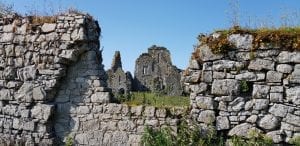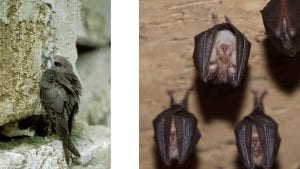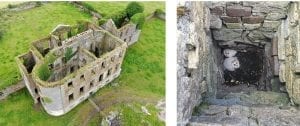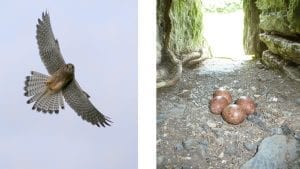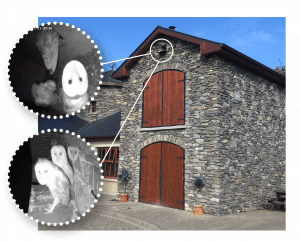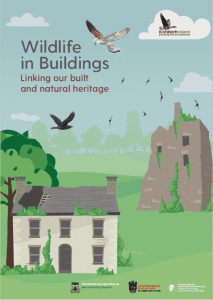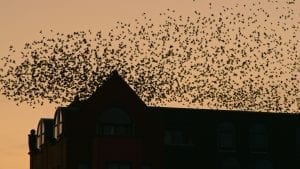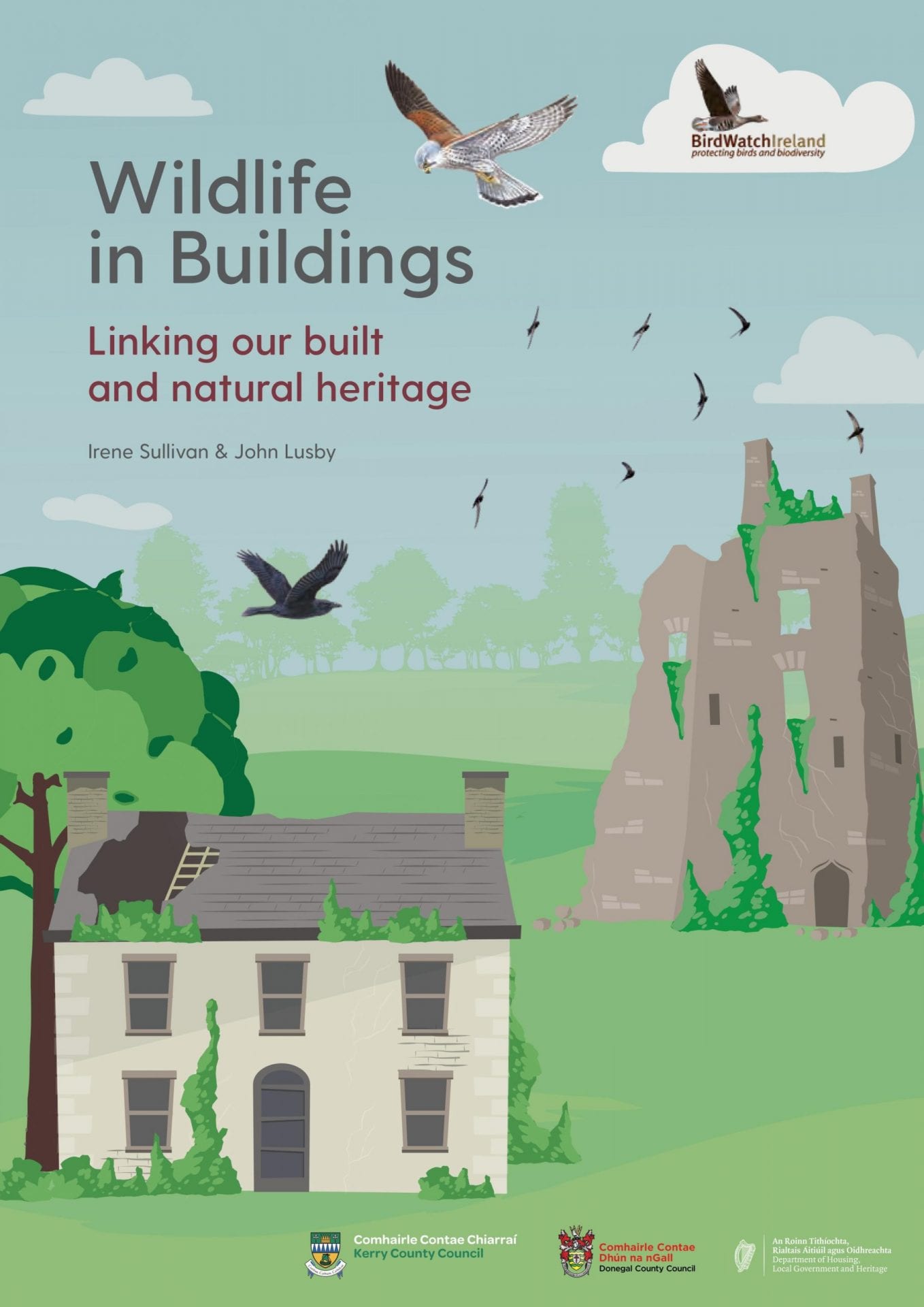
A new publication highlights the importance of the built environment for wildlife and celebrates the species which have adapted to live alongside us and share our homes
A ruined Abbey which is used by a wide range of wildlife © John Lusby
To witness this all we need to do is look at the buildings which surround us and take the time to notice the wildlife which have also made them their homes.
The diversity of species which use buildings, and the ways in which they have adapted to use the built environment, is truly astonishing. Due to the loss and degradation of natural sites used for shelter and breeding, many vulnerable species (such as Swift, Barn Owl and the Lesser Horseshoe Bat) now rely on buildings for their survival. Chimneys, cracks, crevices, ledges and roof spaces now provide ‘artificial’ alternatives to similar opportunities formerly found in ‘natural’ habitats for many species.
Swift © Artur Tabor, Lesser Horseshoe Bat © Ruth Hanniffy
From the diverse range of birds and mammals which have colonised abandoned ruins in remote rural landscapes, to wildlife which has moved into suburban and urban areas to live alongside us and even share our homes, buildings have become an integral component of the Irish landscape for biodiversity. Certain species are expected residents within our buildings, and for some the association with buildings is apparent even from their names, such as the ‘House Martin’ which builds its mud nest in the apex of the roof of occupied houses, and the ‘Barn Swallow’ which travels from Africa to nest in farmyards throughout the country. The vision of a Barn Owl floating silently from a ruined castle at dusk may seem familiar, but less expected occupants may be a pair of Kestrels nesting in a flower box outside a busy kitchen window, or a female Pine Marten raising her kits in the roof space of an occupied dwelling. Of course, much of the wildlife which use buildings go unnoticed, such as bats roosting in the attic of a house in which the inhabitants beneath remain blissfully unaware of their presence.
Workhouse in ruins © Michael O’Clery, Barn Owls in chimney nest © John Lusby
Given the importance of buildings for wildlife, changes to the built environment can affect wildlife associated with it. The loss of old stone structures due to demolition, dilapidation or renovation is linked to declines in species such as Barn Owl and Swift. Modern buildings do not provide the same opportunities for wildlife. Wildlife in buildings can often be harmed during works due to a lack of knowledge on the part of the developers on how different species use buildings. Being mindful of wildlife in buildings can give rise to questions such as, what do we do if we find wildlife? How do we ensure that building works are carried out in a responsible, legal way, which avoids disturbance?
Kestrel in flight © Michael O’Clery, Kestrel nest in castle © John Lusby
BirdWatch Ireland, Kerry County Council and Donegal County Council, with funding from the National Biodiversity Action Plan, have produced a new publication entitled ‘Wildlife in Buildings: linking our built and natural heritage,’ in response to this gap in knowledge, and to provide answers to questions commonly asked regarding wildlife in buildings. Designed as a guide to be used by anyone carrying out works on a building which may support wildlife, the publication will be useful for homeowners, farmers, developers, contractors and ecologists alike – as well as those who simply want to know more about how wildlife use buildings. It provides information not just on how disturbance to wildlife can be avoided, but also on how buildings can be improved to accommodate wildlife, to ensure that as the built environment constantly changes and expands, we continue to make space for nature.
John Lusby, BirdWatch Ireland, commented, ‘We wanted to celebrate the importance of buildings for wildlife and to create a better link between our built heritage and our natural heritage – as the two are intertwined. We are very fortunate in Ireland that so many of our sites of cultural and historic importance remain intact in the landscape. These stone structures are a rich part of our cultural heritage, but they are also of significant ecological value. Some of these sites hold such a diversity of wildlife in such a small area that they should be considered as among our most important sites for biodiversity.’
Irene Sullivan, co-author of the publication, commented, ‘When considering how to treat wildlife in buildings, we are forced to examine our relationship with wildlife. The Wildlife in Buildings booklet provides some answers to questions which may be asked by those dealing with wildlife in buildings, such as, what is the correct way to manage urban-nesting Gulls? I hope that the booklet will be a valuable resource for those carrying out works on buildings which might support wildlife and will encourage its readers to view the built environment in a new light.’
The Biodiversity Officer of Kerry County Council says that ‘Kerry County Council was delighted to be involved in the project and hoped that the publication will ensure our built environment continues to support wildlife’.
Wildlife in Buildings: linking our built and natural heritage’ was produced by BirdWatch Ireland, Kerry County Council and Donegal County Council, with funding from the Department of Housing, Local Government and Heritage through the National Biodiversity Action Plan Fund.
‘Wildlife in Buildings: linking our built and natural heritage’ is available for free, in English and Irish, through the links below and through Kerry County Council: https://www.kerrycoco.ie/wildlife-in-buildings/
Wildlife in Buildings Booklet: Part One Wildlife in Buildings Booklet: Part Two

